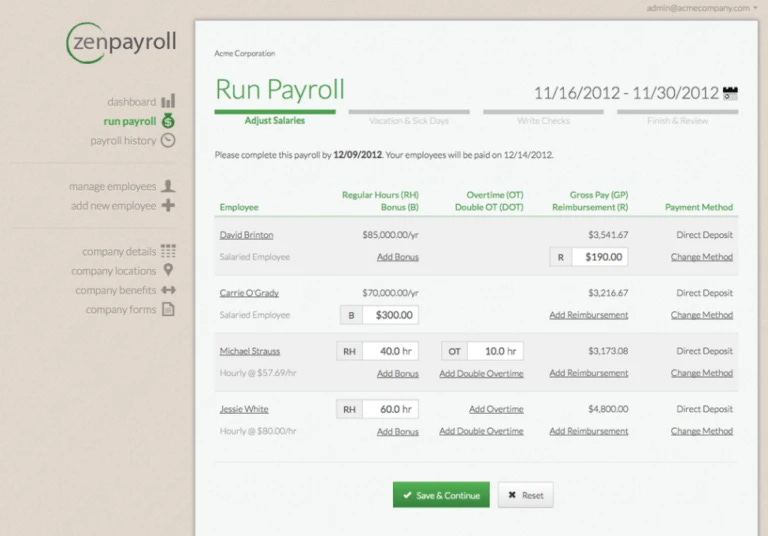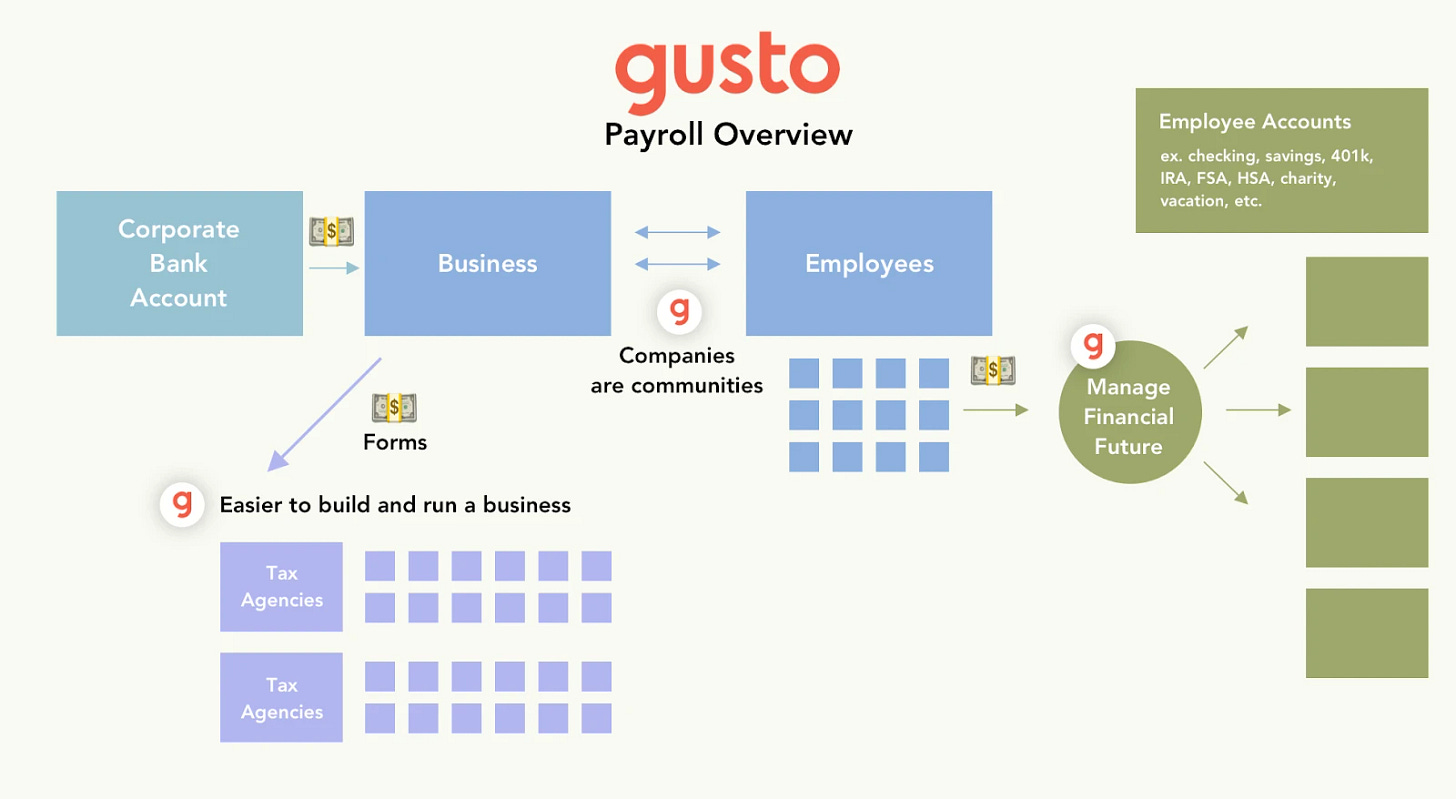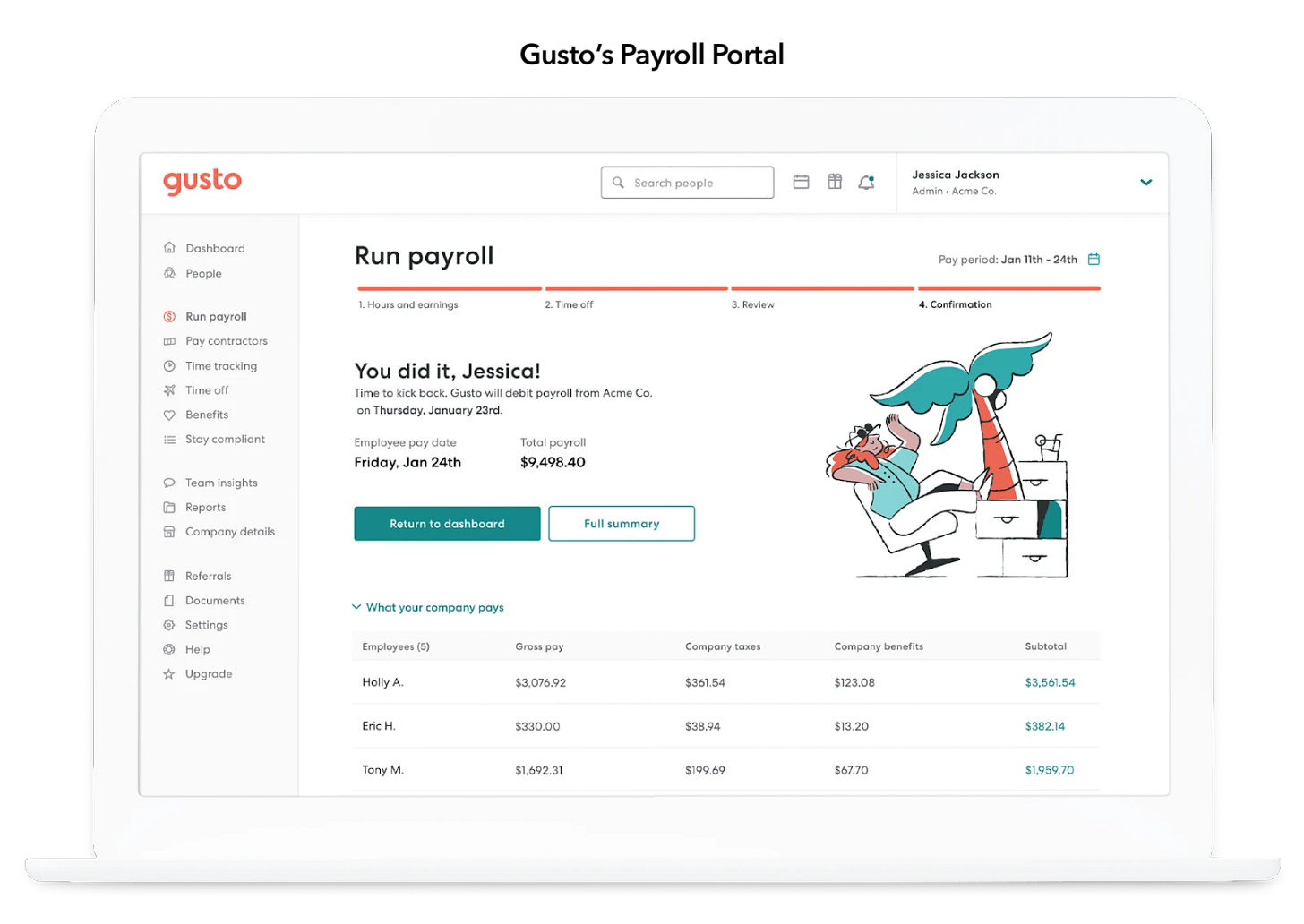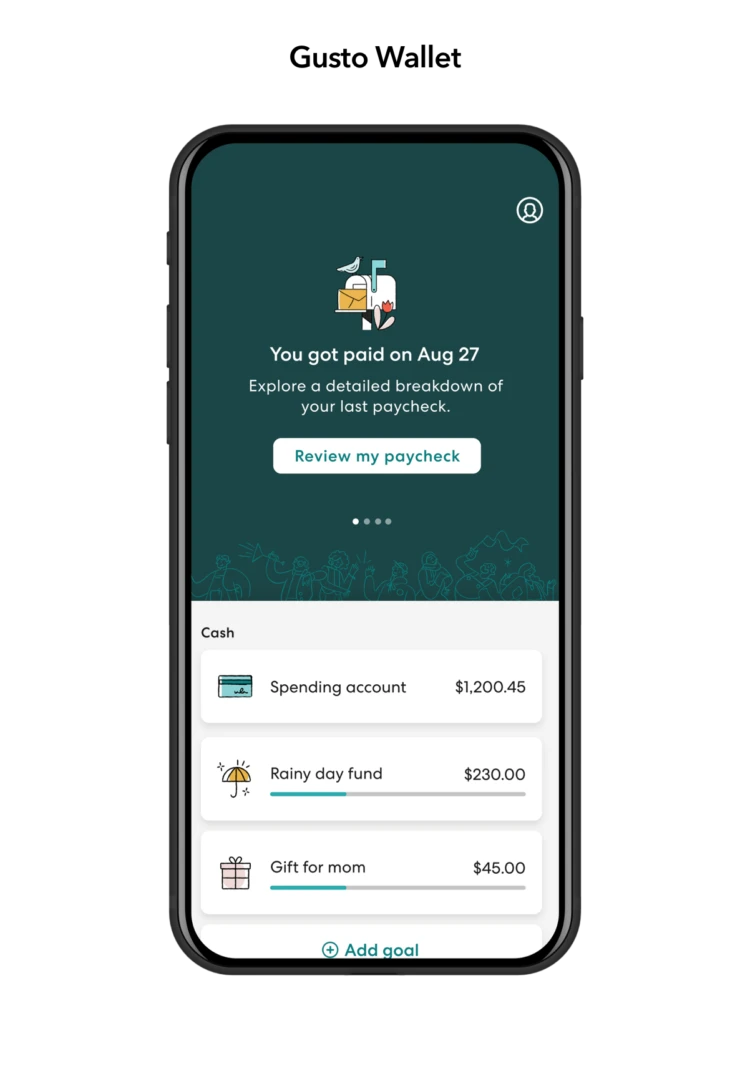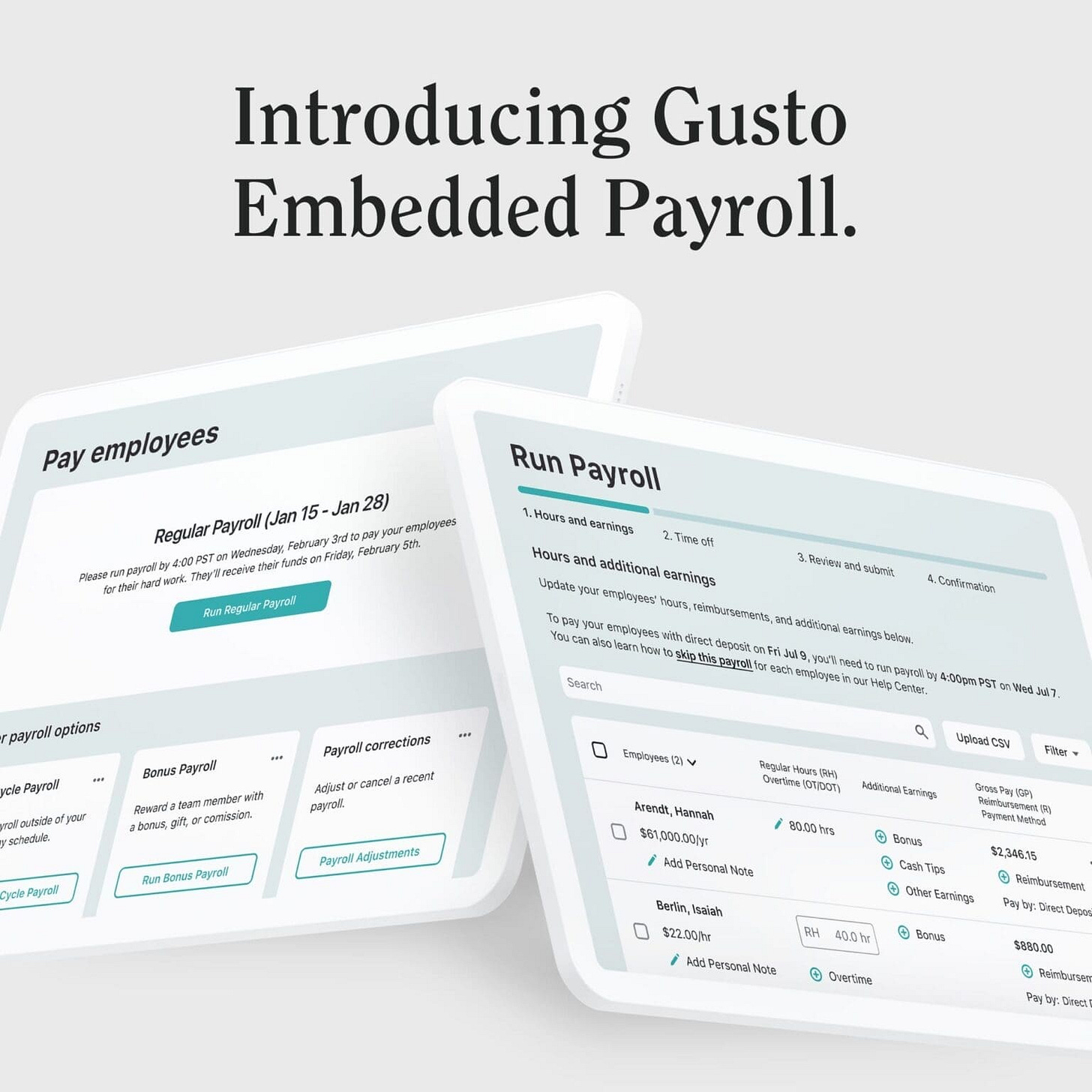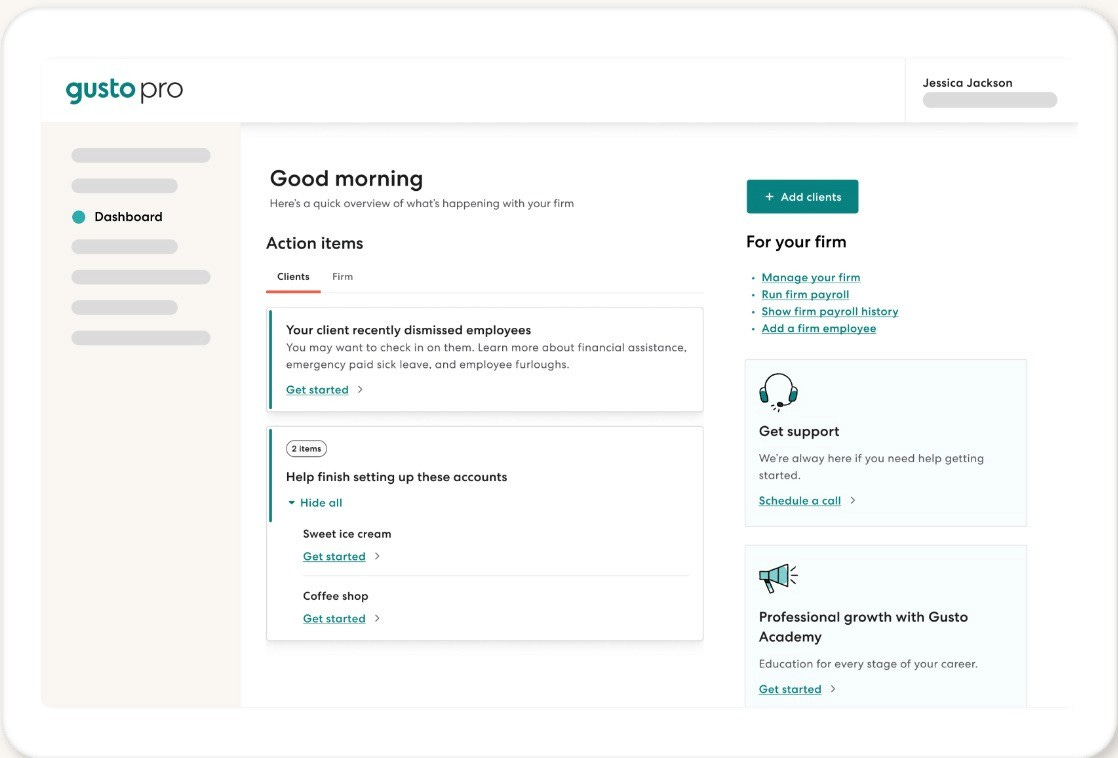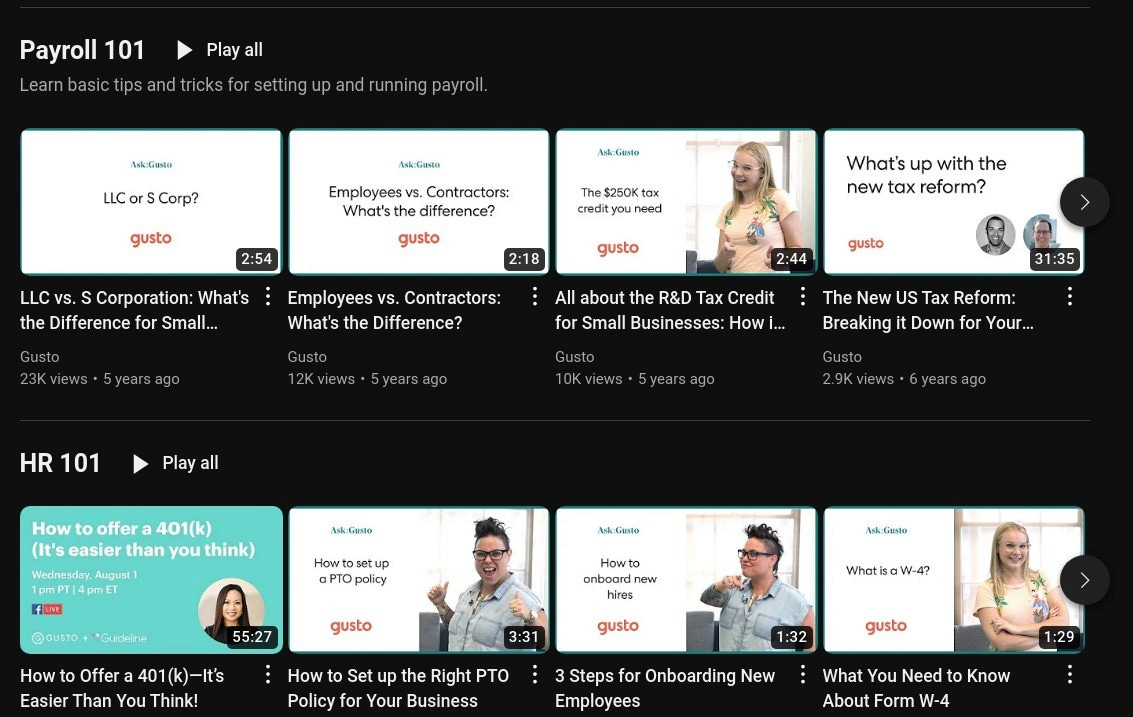Friends,
Gusto is a $9.5 billion company. As of 2024, the company has generated over $500 million in revenue and has over 300,000 customers, reaching this milestone in 12 years. Here is what I learned from Gusto:
Brought to you by:
Market Curve is a B2B SaaS product marketing agency that helps brands tell compelling stories across the entire marketing funnel. The goal is to optimize & grow your user acquisition, engagement & retention.
Here is the stuff we are good at writing/designing.
Website & landing page copy
Blogs/Essays/Newsletters (like this one)
Onboarding flow optimization
Drip/nurture/churn email sequences
Marketing/Sales assets like decks, e-books, guides, case-studies
Product UX copy/design
Social media/ghostwriting content for busy founders/execs
Submit as many requests as you want for a fixed monthly fee and get your requests fulfilled one at a time. Pause or cancel anytime.
Wanna explore what this looks like for your business?
Gusto - A solution to a nagging problem
Gusto was founded by Joshua Reeves, Timer London and Edward Kim in 2011 as ZenPayroll. As earlier founders, they had experienced firsthand the pain of managing HR related operations.
At the time, 46% of 6 million SMBs in the USA were using manual spreadsheets to process payroll & spent more than 3 hours per month doing that. An additional 40% were even paying a penalty every year for incorrect payroll filings.
The existing solutions ADP & Paychex were inefficient. Gusto solved this by building a simple cloud-based payroll software to automate all payroll processes.
Early MVP & Traction
While building the MVP, the founders realized that the build something scrappy & get feedback model won't work. They needed to produce reliable, timely, and precise tax calculations, filings, and payments to earn the trust of customers. So they narrowed their scope down - Gusto would be a cloud-based payroll software for SMBs to automate all payroll actions.
They only targeted companies that (a) did not offer benefits or other deductions (b) whose employees did not mind getting paid four business days after the company ran payroll and (3) had only salaried employees. This focused approach was the perfect foundation for Gusto.
Since they were part of YCombinator, they reached out to community managers at incubators who introduced the Gusto founders to relevant users in their network.
At the same time, they manually onboarded the local SMBs companies in California. They reached 1500 customers in 1 year via strong word of mouth and referrals. Their NPS score was 83/100 with 87% of customers recommending the product to other business owners.
Gusto GTM Strategy
To really accelerate their acquisition efforts, Gusto partnered with accountants.
Once an accountant is introduced to Gusto and sees the value in the product, they introduce the product to other customers they are working with. Gusto actively nurtured these accountant relationships and invited them into their partner program.
The unit economics of Gusto and low ACV (Annual contract value) of SMBs meant that outbound sales wasnt a sustainable growth lever. So they turned to referral-based marketing, content & PLS (product-led sales) as their growth levers
After consolidating the payroll product, Gusto expanded to include employees into the product. This was a strategic move because not only did it add value to the employees & employers but it kickstarted their PLS & referral-based marketing motion.
Employees would recommend Gusto to their friends at other companies and recommend it to their new employers when switching jobs. Gusto gave users the ability to pull in their contacts and embedded referral flows across multiple product touchpoints.
The employees were onboarded seamlessly when joining a new company. Gusto tracked progress of offer signing, distributed forms and plans, and made sure the employee had access to the software they needed. They also implemented time tracking, employee surveys, and distribution of the employee’s documents.
For the SMBs, this was a game changer. For their core payroll product, Gusto was free to use. Their offer was - you don't pay anything until you run your first payroll.They used a product led sales approach (different from product led growth).
Quick note on Product led sales : It is a GTM Strategy that gives sales teams high-quality leads that are generated via the product itself using product analytics data as a source of truth. In the case of Gusto, 50% of users who signed up for free wanted to speak with a salesperson when deciding to upgrade.
Adding multiple revenue streams
In 2020, Gusto partnered with NBKC Bank & added another product to its suite - the Gusto Wallet. It was a free FDIC-insured banking app that let employees create bank accounts with competitive interest rates that put their paycheck, banking, savings and emergency funds in one place.
This added a fintech layer to their product making it more valuable to employees (and to investors). It also consolidated their PLS growth loops where employees could rave about their Gusto wallet with their friends and peers, driving user adoption.
On the employer side, they partnered with Symmetry Software to calculate taxes across states and acquired the company in July 2021. In the same year, they acquired Ardius which helped Gusto customers save money on taxes with R&D tax credit services that scan payroll.
In October 2021, Gusto announced support for paying international contractors and business registration in all 50 states, while also acquiring RemoteTeam, an early-stage startup helping companies manage remote, global teams with payroll management, time-tracking tools, and benefit options specifically for remote workers.
Gusto added another revenue stream to their platform by launching their APIs as a service - the Gusto Embedded Payroll. This allowed developers to embed payroll management directly into their applications via their API. This way, companies could create a custom front end for their customers while Gusto handled the back-end logic.
Gusto also scaled the accounting partnership it had leveraged at the very start by launching Gusto Pro - an accounting dashboard to help accountants better serve their clients. Free marketing materials and one-month free trials were provided to assist accountants & boost referrals & NPS scores.
Gusto User Acquisition Strategy
Since Gusto is PLS led, organic growth is crucial. More than 6.4 million people land on Gusto each year. They have over 3.2 million backlinks and rank for 180,000 search terms. Gusto categorizes its blog posts by themes that are directly tied to their product.
For example, one blog section is titled Payroll which, as you guessed it, ties to their payroll product. For these specific payroll specific topics, they partner with taxation & legal experts to write out these blog posts. This way Gusto the brand is associated with credibility for first time visitors making it likely for them to sign up for Gusto the product.
They also have an Ask Gusto section which answers frequently asked questions SMBs have related to payroll & compliance. Their Youtube channel is heavily focused on these FAQs videos which are quick and easy to grasp with playlists across HR 101, Payroll 101, and of course Youtube shorts.
Gusto also leverages engineering-as-marketing as a growth channel. Gusto builds free tools that capture top of funnel intent which rank on Google. Tools like hourly paycheck calculator, salary paycheck calculator etc get 600,000 visits each year.
They also run ads on Facebook to target employees who spread the word to their managers or executives. These execs land on the Gusto landing page which triggers a remarketing campaign that is focused on getting them to sign up.
Gusto invested in community education too. In 2022, they launched Gusto Academy which contains 12 hours of e-learning along with 85 videos. This educates customers on how to use Gusto turning them into experts & brand advocates for Gusto.
10 Key lessons from Gusto
Define a nagging problem that incumbents in the market cannot seem to solve.
Understand who your users are and build a v1 that will gain their trust.
Do things that don't scale till you get your first 100 users.
Use your unit economic metrics to decide what growth channels to invest in.
Invest in strategic partnerships. Ask yourself, who has the easiest access to my customer base? And how can I partner with them?
Optimize for customer satisfaction & referrals from day one.
Decode which user persona can act as a distribution channel for your product.
It isn't a bad idea to add multiple layers to your product to make it more robust and all-purpose.
Engineering as marketing is underrated. Use it.
Leverage experts to write high-quality content that lends credibility to your product/brand.
This is it for this long essay.
Phew! I am exhausted.
If you liked this essay, consider sharing this with a friend or share it on Twitter or give me a shoutout on LinkedIn.
And as always, any feedback is mucho appreciated!
See you next week!








